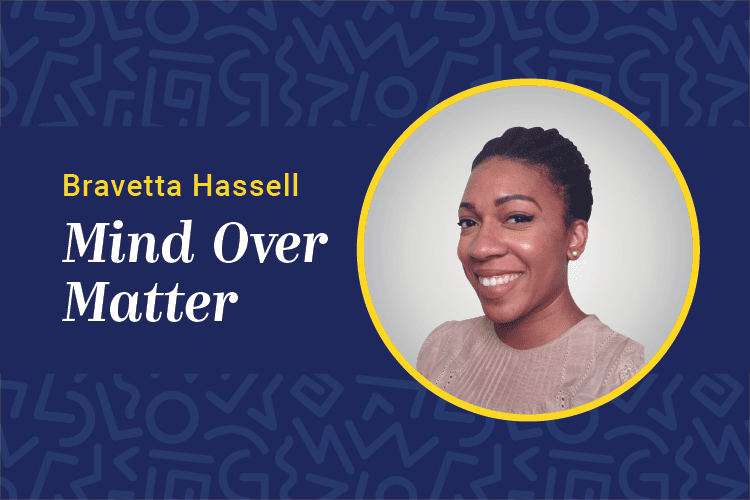
In keeping with the workplace tradition observed in movies, on TV, in my office, hopefully in your office, my colleagues and I recently gathered to collectively celebrate and say goodbye to another year working together. This year, we all piled into a party bus and were shuttled over to the comedy club, theatre and improv school Second City for some teambuilding. There, the school’s professional development team led our group through several activities that drew us out and made us think. Some great points were offered about collaboration by the workshop’s facilitators as well as my brilliant coworkers.
Among the takeaways was this: That when employees feel comfortable enough to run into the arena — or the middle of a large, empty room with more than a dozen people staring at you — and support their colleagues, much can be accomplished, and it can be accomplished faster. Sounds simple enough — teamwork makes the dream work, but taken as one of the team building activities, it goes a bit deeper.
In one of my favorite books, Brené Brown’s “Daring Greatly,” she talks with ChangeLabs (now Karrikins Group) CEO Peter Sheahan about the importance of vulnerability in the workplace. A culture that encourages engagement, sharing, creativity and experimentation fosters innovation. A shame-prone environment — one in which people don’t feel supported in offering their unique perspective for fear of rejection, are held to narrow standards and are treated like machines and not human beings — does the opposite.
Shame is the secret killer of innovation, Brown quotes Sheahan as saying. “You can’t measure it, but it is there. Every time someone holds back on a new idea, fails to give their manager much needed feedback, and is afraid to speak up in front of a client you can be sure shame played a part. That deep fear we all have of being wrong, of being belittled and of feeling less than, is what stops us (from) taking the very risks required to move our companies forward.”
The risks my colleagues and I took during the holiday party weren’t the kind that would move our company forward — at least not on their surface. One of the aforementioned activities — “Statues,” required that we form a circle. One person would volunteer themselves to run to the center of the circle, strike a pose and hold it until someone else ran in struck a pose of their own, thereby allowing the original person to return to their place standing alongside everyone else.
Despite the fact we’d already spent about 90-minutes being as uninhibited as we’d allow ourselves to be around our coworkers, “Statues” started out pretty awkward. People would run into the center, freeze and wait for what seemed like forever for someone to come rescue them.
Afterward, Second City Works’ Robyn Scott asked the group to do some reflection. Why had it taken people so doggone long to help out their fellow teammates? Ok, she totally didn’t ask it that way. But the answers all pointed to self and how we personally feared we would look out there in the spotlight. It’s understandable. But what if we made the activity less about ourselves and more about everyone else — celebrating and supporting one another as we braved The Middle of the Circle?
We tried “Statues” again, and this time it ran much smoother and more quickly. The circle was now perceived as a friendly place, a place where people were putting themselves on the line, and we could empathize with them, and be bold ourselves.
Sheahan’s view on the value of vulnerability in encouraging risk-taking was completely on display during that game — and all the others we played. But “Statues” prompted me to take that position a step further.
Am I far off base in saying that businesses that cultivate courage, compassion and connection — essentially embracing vulnerability — are not only fertile grounds for innovation but also ones that can move with greater agility because of those qualities — what Brown calls wholeheartedness? I don’t think I am.
Teams can mobilize quickly and incredibly dynamically when united around a common vision; tapping into and playing off each members’ strengths. But getting to a fast-moving, innovative workgroup, team or organization, doesn’t occur spontaneously. It takes work. It takes nurturing and continuously promoting a learning culture where people feel comfortable — encouraged to bring and give their best to their work, take risks, fail, and get back up and persevere with greater insight.
There were coaches during my time in high school who supported this type of learning. Teachers, professors and managers, too. The space to put myself out there was a boon to my development as a runner, a student, a reporter. But what matters at the end is to keep things others-focused, to be deliberate in drawing out the best in your team because it’s not about me, but you. How does your company encourage everybody to show up, and really show out, with respect to their skills, experiences and goals?
The sooner companies open their arms to this type of courage, the sooner employees will feel safe to bring it. More courage at the table to share ideas, to offer constructive feedback, to actively listen and to thoughtfully engage, will produce better end-results more quickly.
Bravetta Hassell is a Chief Learning Officer associate editor. Comment below, or email editor@CLOmedia.com.












